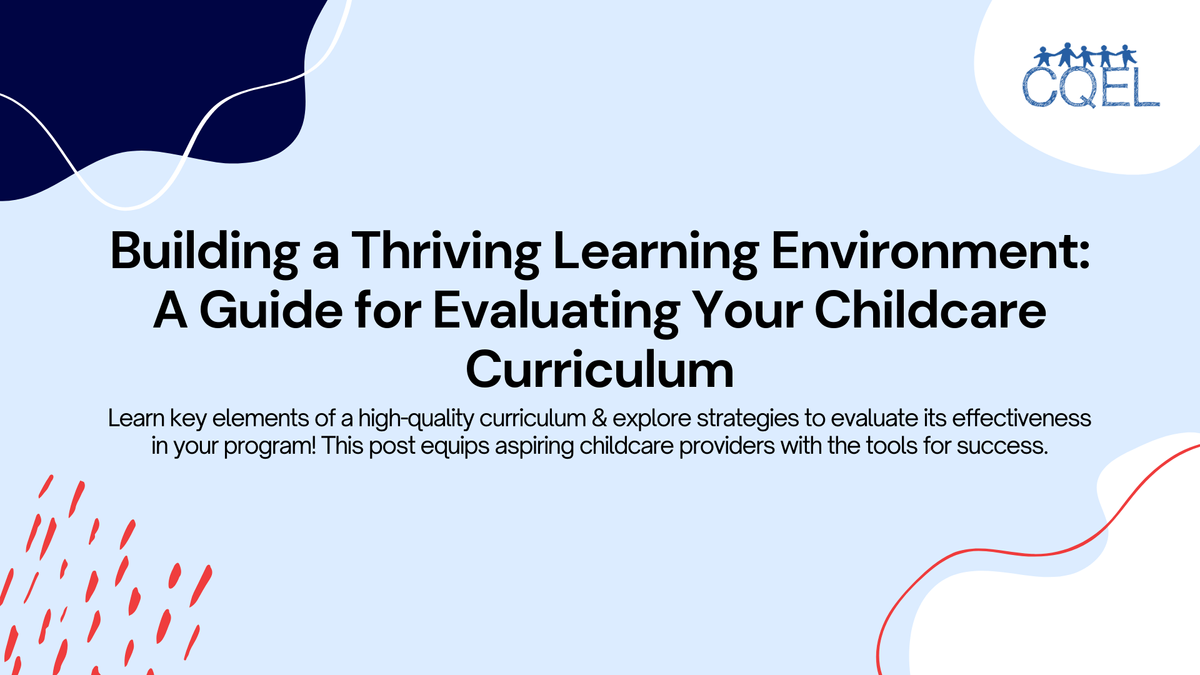Building a Thriving Learning Environment: A Guide for Evaluating Your Childcare Curriculum
Learn key elements of a high-quality curriculum & explore strategies to evaluate its effectiveness in your program! This post equips aspiring childcare providers with the tools for success.

In the world of childcare, a well-designed curriculum is more than just a daily schedule of activities. It's a roadmap for fostering a child's development across cognitive, social-emotional, physical, and creative domains. A strong curriculum lays the foundation for engaging learning experiences, ignites a child's natural curiosity, and ultimately contributes to their overall well-being. As an aspiring childcare provider in California, you might be wondering how to ensure your curriculum is effective and aligns with the needs of the children entrusted to your care. Let's delve into the key elements of a high-quality curriculum and explore strategies for evaluating its effectiveness in your program.
California's Early Learning and Development Standards (ELDS) ([invalid URL removed]) serve as a compass for early childhood education programs in the state. A strong curriculum aligns with these standards by incorporating developmentally appropriate activities that cater to the specific age group in your program. Imagine a curriculum for toddlers that includes opportunities for gross motor skill development through active play, while also fostering social-emotional growth through circle time activities that encourage sharing and turn-taking. Furthermore, a high-quality curriculum goes beyond academics. It integrates exploration and play into the daily routine, allowing children to learn through hands-on experiences and discover their interests at their own pace. Remember, the best curriculum considers not just the ELDS but also the unique needs and personalities of the children in your program.
So, how do you know if your curriculum is hitting the mark? Evaluating its effectiveness is crucial for continuous improvement. One way to assess your curriculum is by observing children's engagement. Are they actively participating in activities? Are they challenged and stimulated by the materials offered? Another valuable tool is data collection. Tracking a child's progress in various developmental domains, aligned with the ELDS, can reveal areas where the curriculum might need adjustments to better support individual needs. Finally, soliciting feedback from parents is essential. Do they feel the curriculum aligns with their child's interests and learning style? Open communication with parents allows you to refine your curriculum and ensure it reflects the needs of the entire childcare community. Staying current with the latest research and best practices in early childhood education is also vital. Professional development opportunities offered by childcare resource and referral agencies can equip you with valuable strategies for curriculum development and implementation.
Regularly evaluating and refining your curriculum is an ongoing process, not a one-time task. By aligning your curriculum with California's ELDS and fostering a stimulating learning environment, you create a space where every child can thrive. The California Department of Education (CDE) website offers a wealth of information and resources on the ELDS, while the California Child Development Resource and Referral Network connects childcare providers with professional development opportunities to enhance their curriculum development skills. A strong curriculum is the foundation for a nurturing and enriching childcare experience. So embrace the power of evaluation, utilize available resources, and embark on a journey of continuous improvement to cultivate a thriving learning environment for all the children in your care.
